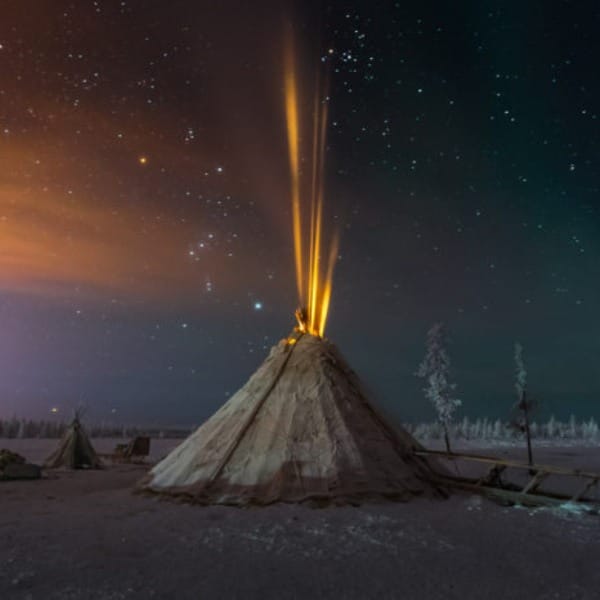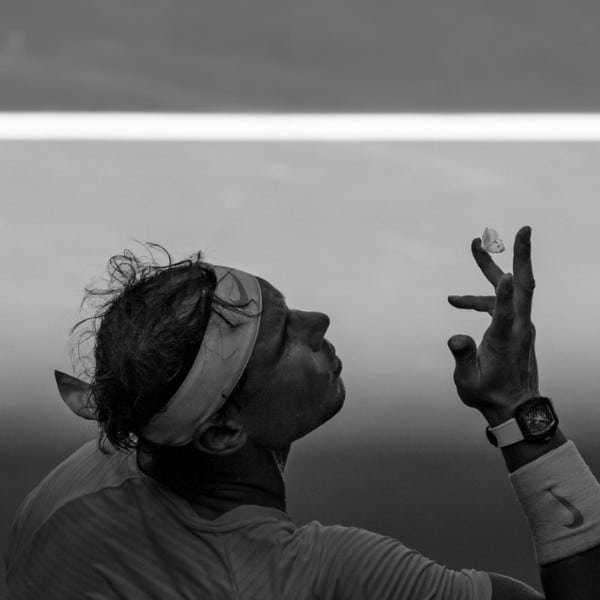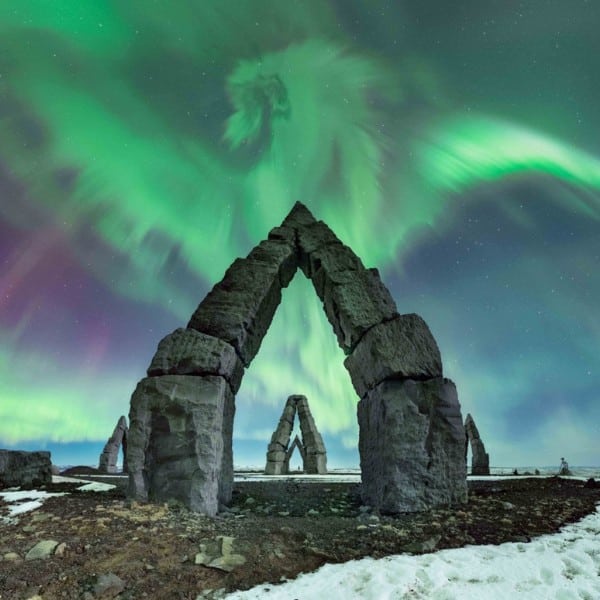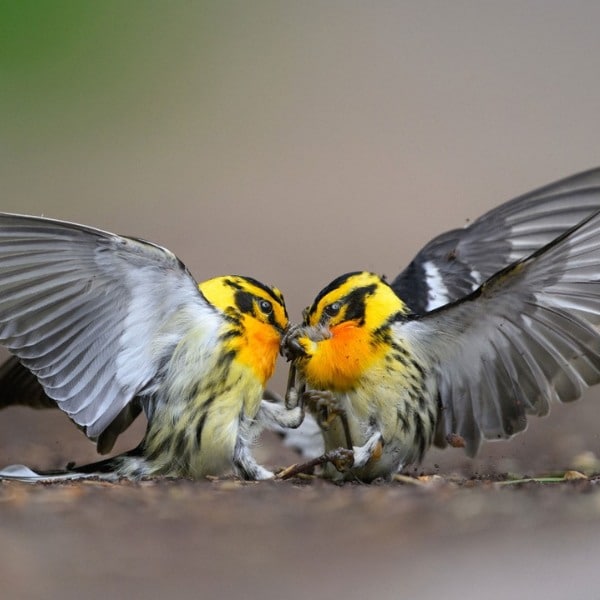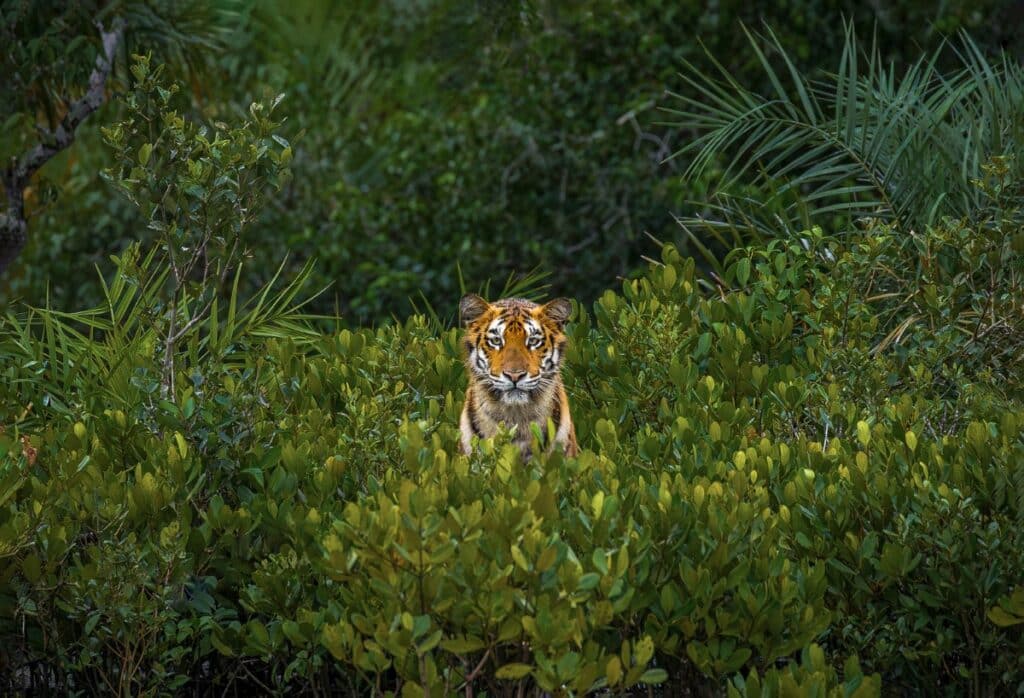
“The Finest “Flower” of the Mangroves” by Soham Bhattacharyya, India. Overall Winner and Winner,
“‘The Finest “Flower” of the Mangroves’ captures a heart-warming image of a young Royal Bengal tigress through the mangrove bushes of a fragile natural wonder. There are perhaps only 200 of these magnificent animals in the Sundarbans mangrove forest. According to the last survey conducted in 2018, there were 114 tigers in the Bangladesh portion of the Sundarbans. West Bengal Forest Department's recent tiger estimation exercise for 2020–21, puts the number of big cats in the region at 96. These iconic and endangered Bengals are the only tigers adapted to live in a mangrove habitat. Sadly, the largest mangrove forest in the world is also under threat, with nearly a staggering 25 percent lost (136.77 square km) due to erosion and human pressures over the past three decades.”
Providing natural infrastructure to protect against erosion and capturing large amounts of carbon dioxide emissions, mangroves are a vital part of the ecosystem. However, these natural allies against climate change are facing challenges. This makes organizations like the Mangrove Action Project, which works to preserve and restore the world's mangrove forests, all the more vital.
As part of their public outreach, the Mangrove Action Project hosts the annual Mangrove Photography Awards. Now in its ninth edition, the photo contest shines a light on the stories and moments found within mangroves around the world.
“Mangroves are the unsung heroes of our coastal environments, serving as nature's protectors, purifiers, and climate regulators,” shares competition judge Daisy Gilardini. “Efforts to raise awareness about the importance of mangroves, like the Mangrove Photography Awards, serve as beacons of hope in the quest for their preservation. They kindle an appreciation for the complex web of life that relies on mangroves and underline the urgent need for their conservation.”
This year, Soham Bhattacharyya has been crowned Mangrove Photographer of the Year with a remarkable photo that captures the curious gaze of a young, endangered tigress in the Sundarbans Biosphere Reserve. Looking directly into the lens, she speaks to us with her gaze, almost imploring us to help reverse the tide of this shrinking habitat.
In addition to the overall winner, photos in five different categories—People, Landscape, Underwater, Threats, and Wildlife—were also singled out. There is also the Stories category, won by Bangladeshi photographer Mohammad Rakibul Hasan, which honors a portfolio of work.
Photographers under the age of 24 competed to become the Young Mangrove Photographer of the Year. Katanyou Wuttichaitanakorn of Thailand won the title thanks to a charming photo of a baby Golden-spotted Mudskipper peering out from a mangrove.
The photos are a compelling reminder of the importance of mangroves for the diversity of life across our coastlines as photographers captured unique relationships and moments from mangrove ecosystems both above and below the water line. They’re also a stark reminder of our need to protect these unique and precious ecosystems.
See the winners of the 2023 Mangrove Photography Awards.

“Pink Mangrove Lagoon” by Felipe Santander, Colombia. Runner Up, Mangroves & Landscape.
“Unique conditions in temperature, minerals, and algae turn this lagoon in Colombia pink. Photographer Felipe Santander spent four days and 15 drone batteries to capture the perfect shot, complete with the formation of birds flying over the pink lake. The salinity of the seawater combined with rising temperatures makes for an ideal situation where the microscopic pink algae can thrive. This is likely to become more common with rising temperatures due to climate change.”
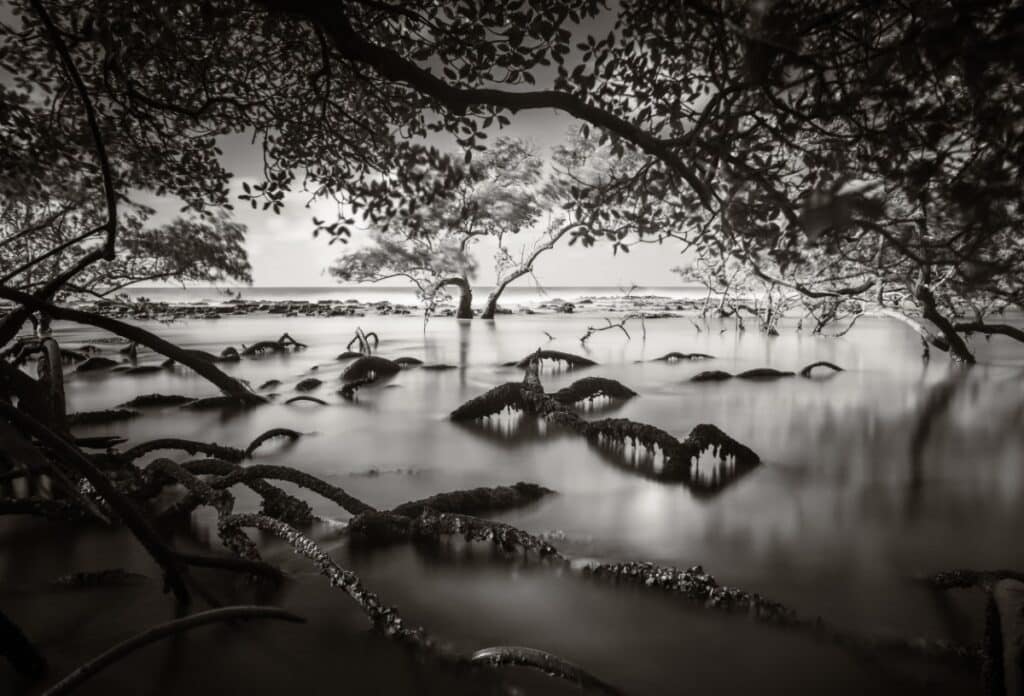
“Emerging Roots” by Cristiano Martins Xavier, Brazil. Winner, Mangroves & Landscape.
“Mangrove roots emerge from shallow water deep inside a mangrove forest. Brazil is home to extensive mangrove ecosystems along its coastline, with approximately 7% of the world's mangrove area. Like in many parts of the world, mangroves face threats from deforestation, pollution, and climate change impacts, such as rising sea levels.”
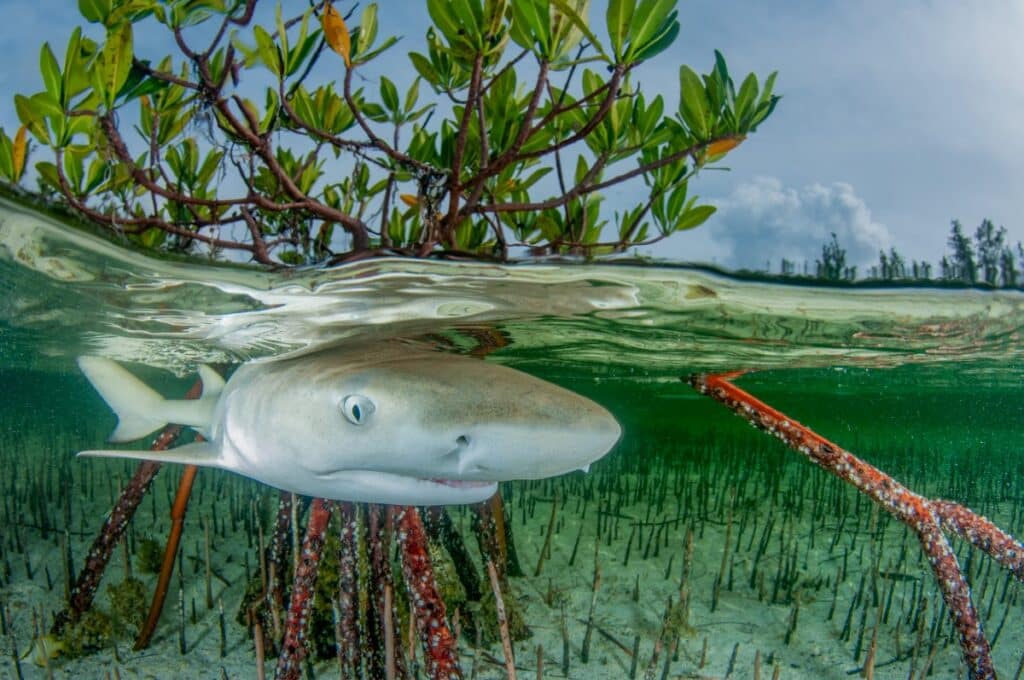
“A Lemon’s Life” by Anita Kainrath, Bahamas. Winner, Mangroves & Underwater.
“A juvenile lemon shark swims in shallow mangrove forests in the Bahamas. Lemon sharks are probably the most understood sharks in the world, thanks to over 30 years of studies by Bimini Shark Lab. The sharks also use natal philopatry, meaning when mature (12–14 years old) females are ready to pup, they return to the same mangrove nursery that they were born in and drop their own pups there.”
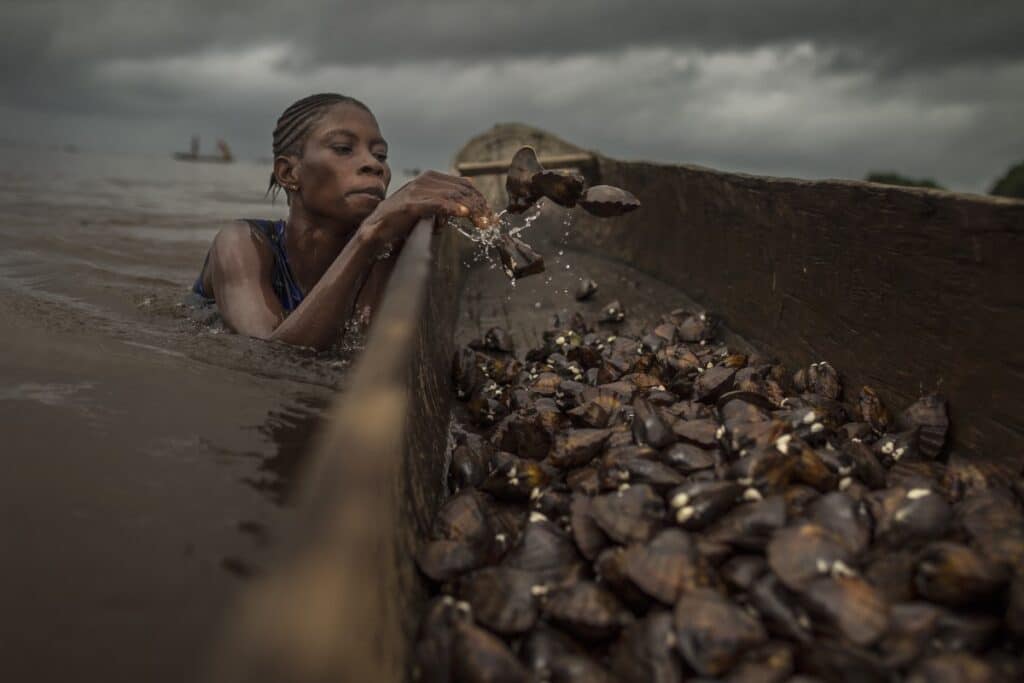
“Séphora the Clam Diver” Kris Pannecoucke, Democratic Republic of the Congo. Winner, Mangroves & People.
“Between river, sea and land, the Mangrove Marine Park, a fragile nature reserve in Bas-Congo, is the kingdom of turtles, manatees, and women who harvest clams. Since the dawn of time, people have been diving in the mangroves in search of clams. At a depth of four meters, she carefully scans the ground with her hands until she finds clams. She grabs a handful and emerges, throws them into her canoe, and disappears into the water again. She spends hours in the Congo River until her canoe is full or the tide comes in, and her treasure disappears into inaccessible depths. The current is treacherous, in the Congo estuary, it is so strong that sediments are carried up to 800 kilometers into the Atlantic Ocean. Séphora and dozens of other women dive for clams in the Parc Marin des Mangroves, a fragile nature reserve.”
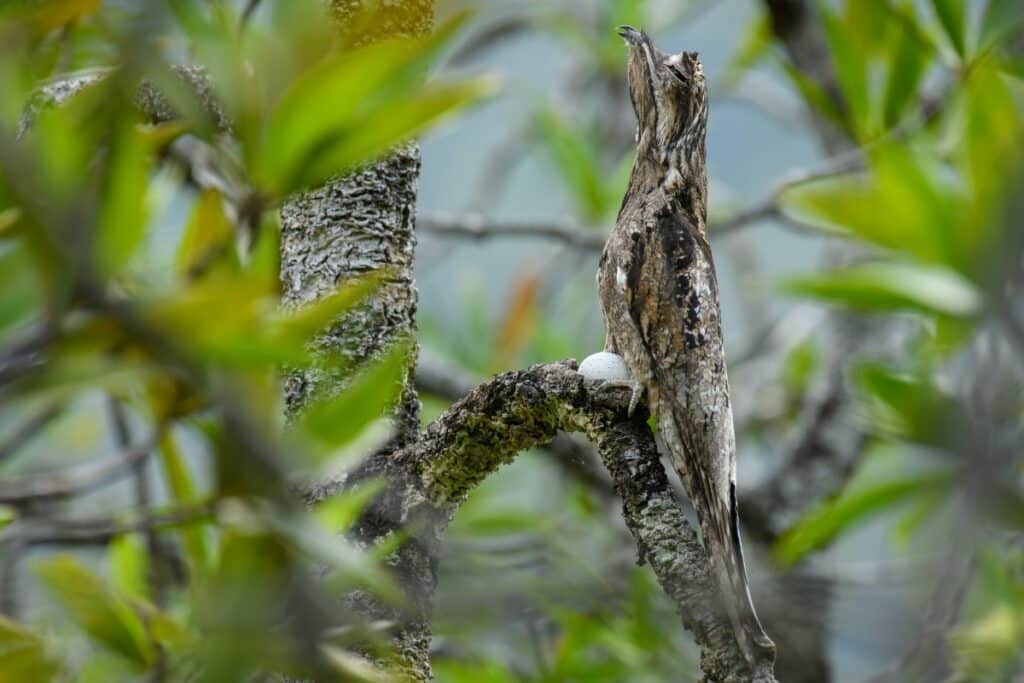
“Hiding in Plain Sight” by Chien Lee, Colombia. Winner, Mangroves & Wildlife.
“In the mangrove forest of Colombia’s Utría National Park, a Common Potoo (Nyctibius griseus) is nearly indistinguishable from the surrounding branches while it perches motionless on its nest.
Utría National Park, located on Colombia's Pacific coast in the Chocó region, is renowned for its stunning biodiversity. One of the highlights of the national park is the potoo, a fascinating and cryptic nocturnal bird. One striking feature of the potoo is its remarkable camouflage. During the day, it perches on tree branches, remaining perfectly still, with its cryptic plumage resembling a broken tree branch or stump. This camouflage helps it blend seamlessly with its surroundings, making it exceptionally challenging to spot.”
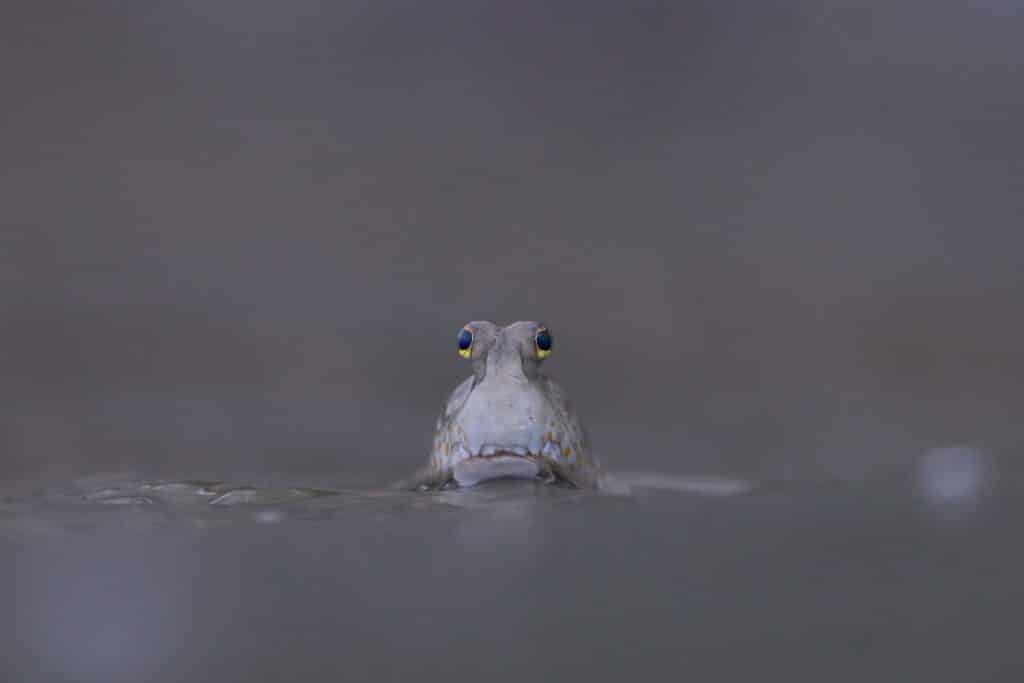
“Eye Contact” by Katanyou Wuttichaitanakorn, Thailand. Winner, Young Mangrove Photographer of the Year.
“A baby Golden-spotted Mudskipper snapped on the edge of a mangrove in Samut Sakorn province, Thailand. Mudskippers are amphibious fish and can use their pectoral fins to ‘walk' on land.”
The winners were selected from over 2,000 entries originating from 72 countries.
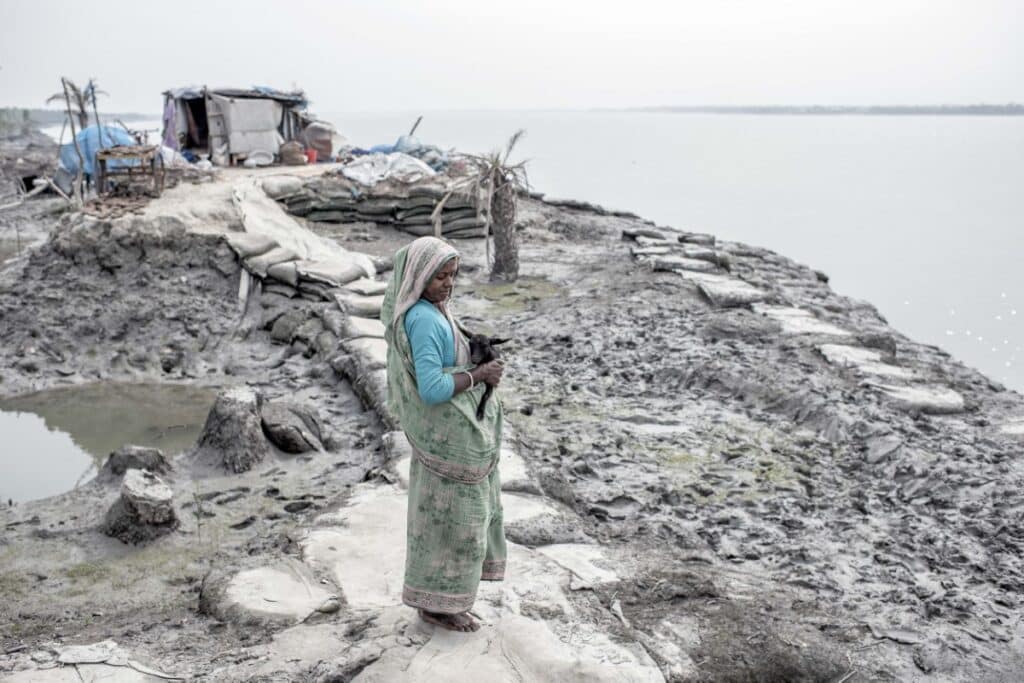
“The Blue Fig” by Mohammad Rakibul Hasan, Bangladesh. Winner, Mangroves & Conservation Stories.
“The Sundarbans, which means ‘beautiful forest,' is one of the most vulnerable areas in the country to the impacts of climate change. It is one of the wildest places left on Earth: a biodiversity hotspot and a complex tidal network of waterways and islands that is only accessible by boat. It is a delicate ecosystem that is under pressure from human development and the climate crisis, which is threatening the ecology of the Sundarbans.”
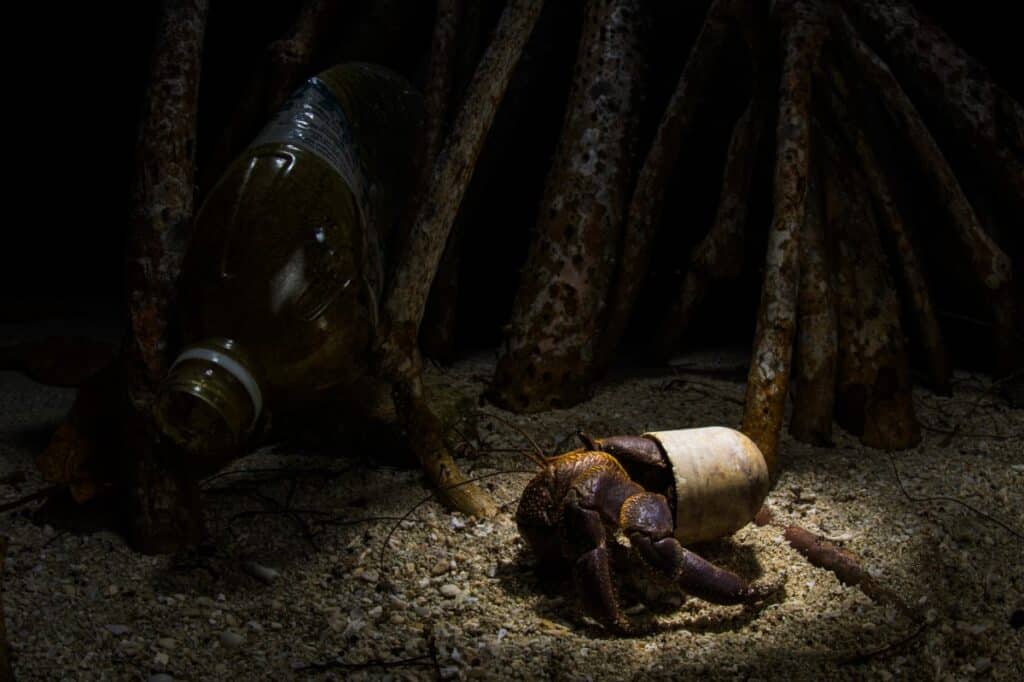
“The Theatre of Plastic” by Emanuele Biggi, Malaysia. Winner, Mangroves & Threats.
“A land hermit crab wanders around at night, close to the beach of Pom Pom island, Sabah, using a plastic deodorant plug instead of a shell. Hermit crabs rely on empty shells for shelter and protection. Plastic debris, including bottle caps and other discarded items, can sometimes resemble shells. Hermit crabs may attempt to inhabit these unnatural ‘shells,' which do not provide the necessary protection and can hinder their growth and survival.”
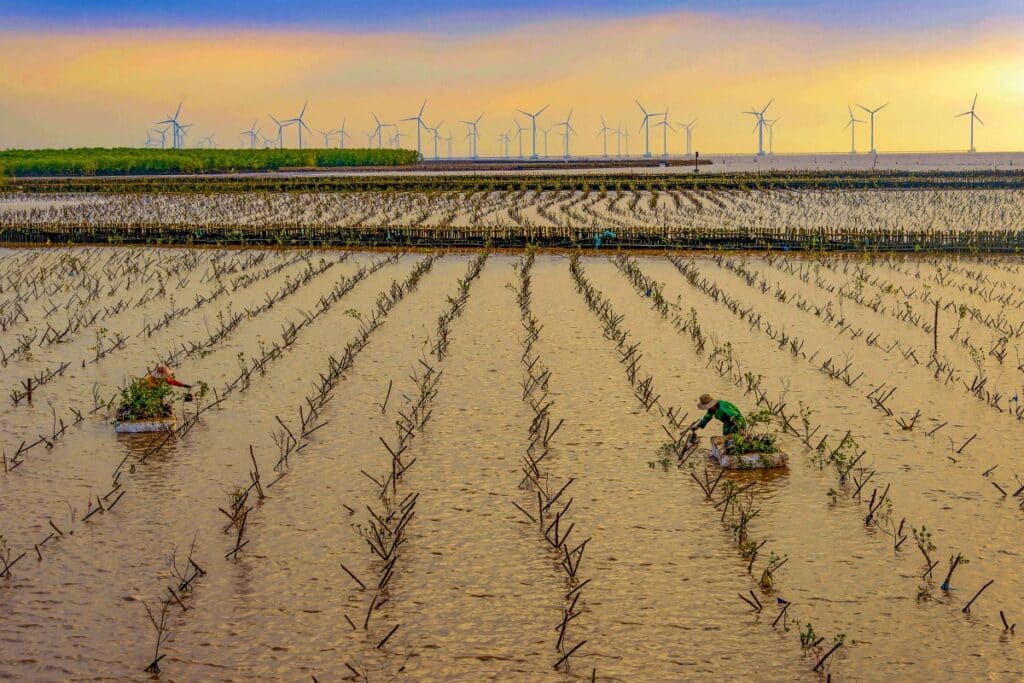
“Planting Mangrove Forests” by Kim Cuong Nguyen Trang, Vietnam. Highly Commended, Mangroves & People.
“Mangrove planting takes place in this forest of Vietnam.”
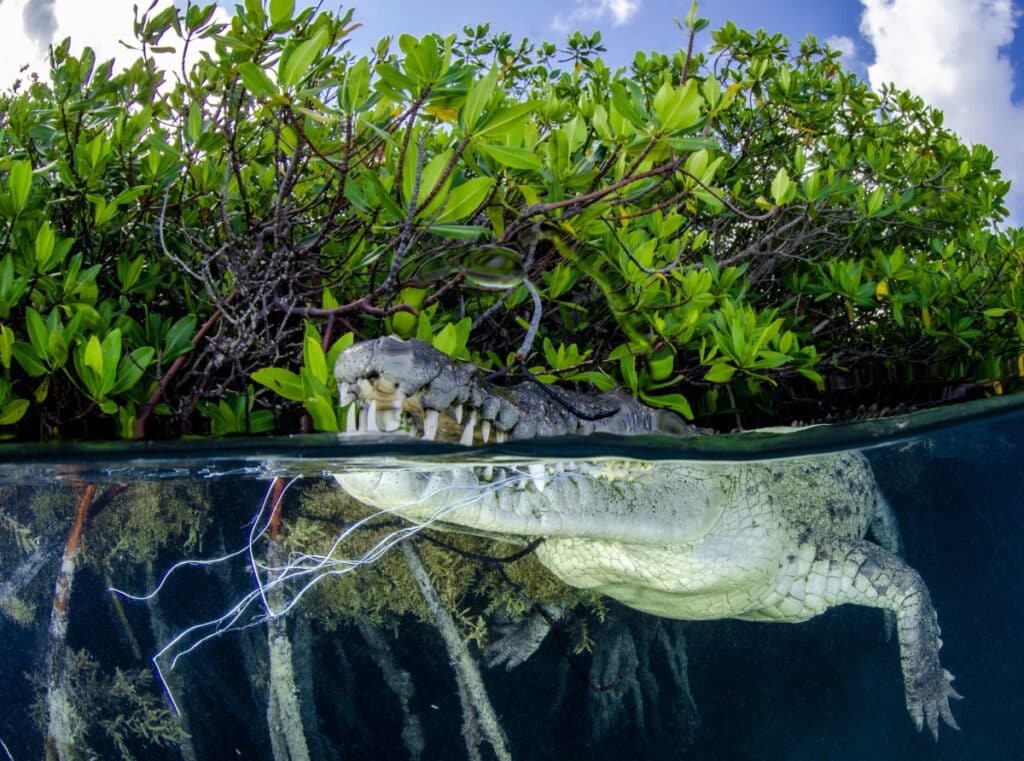
“Wild & Free” by Yordanis Méndez Segura, Cuba. Highly Commended, Mangroves & Threats.
“In the Gulf of Ana María, this mangrove-dwelling American saltwater crocodile was spotted with its mouth tangled in nylon rope.”
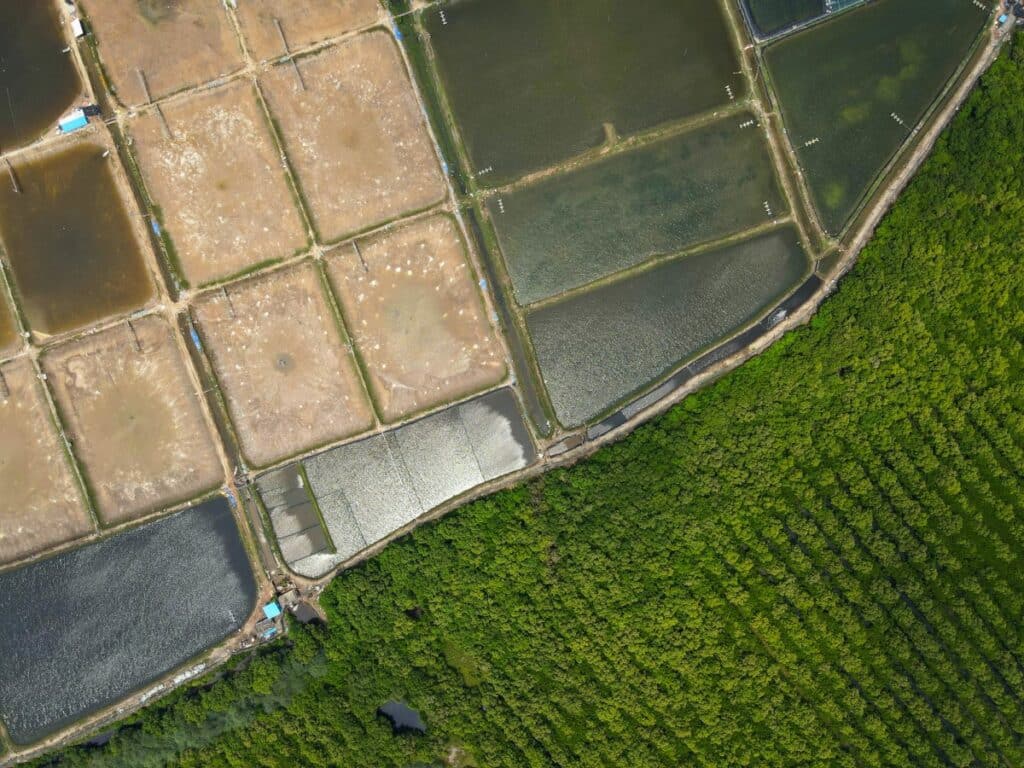
“Mangroves vs Aquaculture” by Katta Devi Sri Kalyan, India. Runner Up, Young Mangrove Photographer of the Year.
“Shrimp aquaculture can have significant impacts on mangrove forests. One of the most significant negative impacts of shrimp aquaculture is the destruction and clearance of mangrove forests to make way for shrimp ponds. Shrimp farming requires the use of chemicals, antibiotics, and fertilizers to enhance production. These substances can leach into surrounding water bodies, leading to water pollution and harming both the mangrove ecosystem and other marine life.”
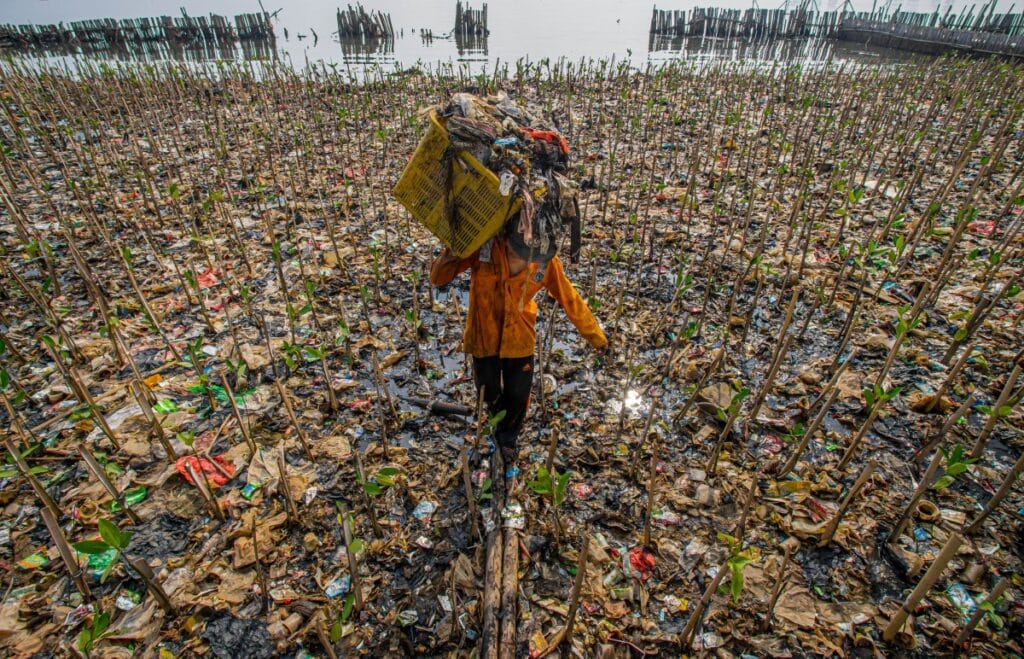
“Cleaning up the Coastline” by Gerdie Hutomo, Indonesia. Runner Up, Mangroves & Threats.
“A worker carries a crate full of garbage from the North Coastline of the city of Jakarta, Indonesia. ‘All of the garbage came from the river inside the city and flowed north to the coastline and piled up massively, disturbing the growth of the mangrove trees.' Plastic debris, such as bottles, bags, and microplastics, can accumulate in mangrove forests. This physical contamination can smother and damage mangrove roots, which are essential for stabilizing the coastline and providing habitat for numerous species.”
The contest is an important tool for raising awareness about the unique and precious ecosystems mangroves create and protect.
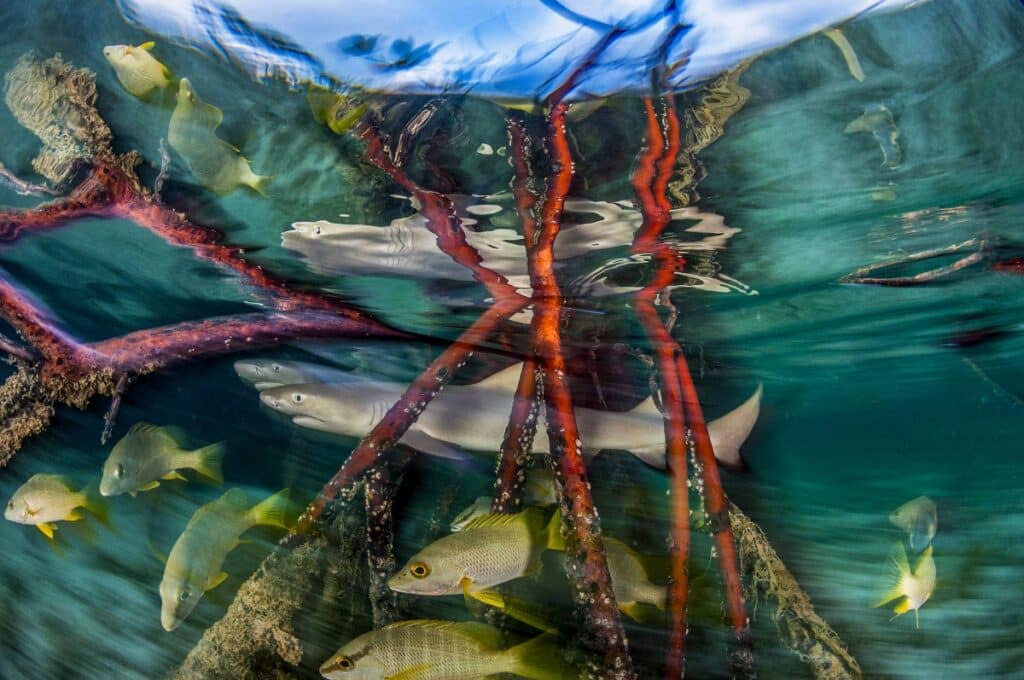
“Nursery” by Shane Gross, Bahamas. Highly Commended, Mangroves & Underwater.
“Lemon shark pups hide in the mangroves at high tide.”
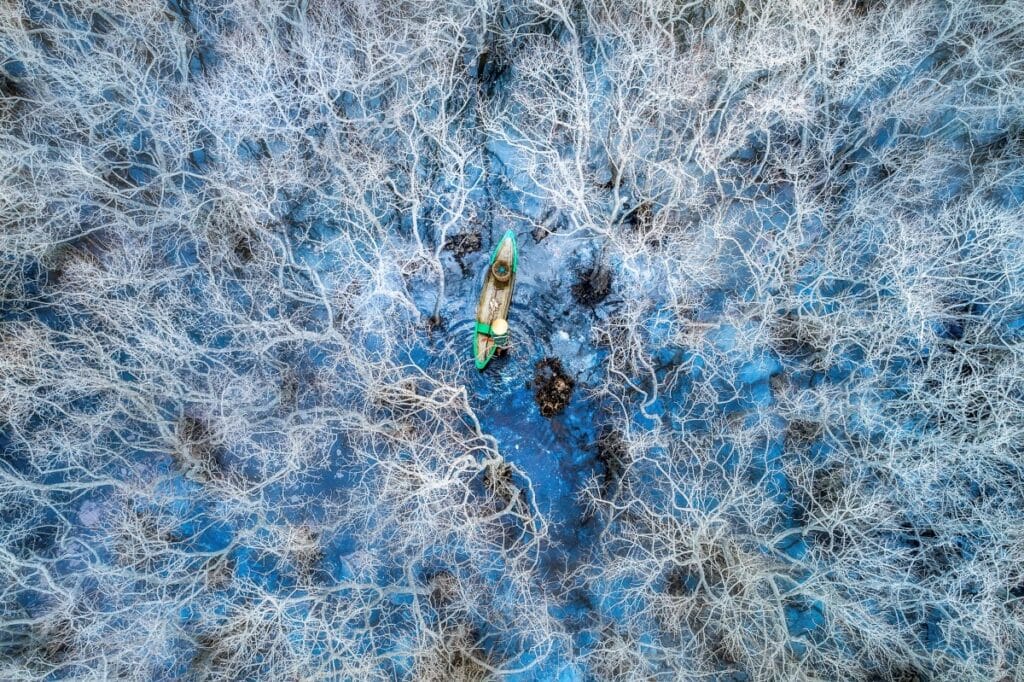
“In the Forest” by Phan Thi Khanh, Vietnam. Runner Up, Mangroves & People.
“A fisherman navigates the winter mangroves in Hue, Vietnam. Ru Cha Mangroves Forest is nestled in Tam Giang Lagoon in Thua Thien-Hue Province. In the local dialect, ru means forest while cha is the name of the trees growing densely in the forest.”
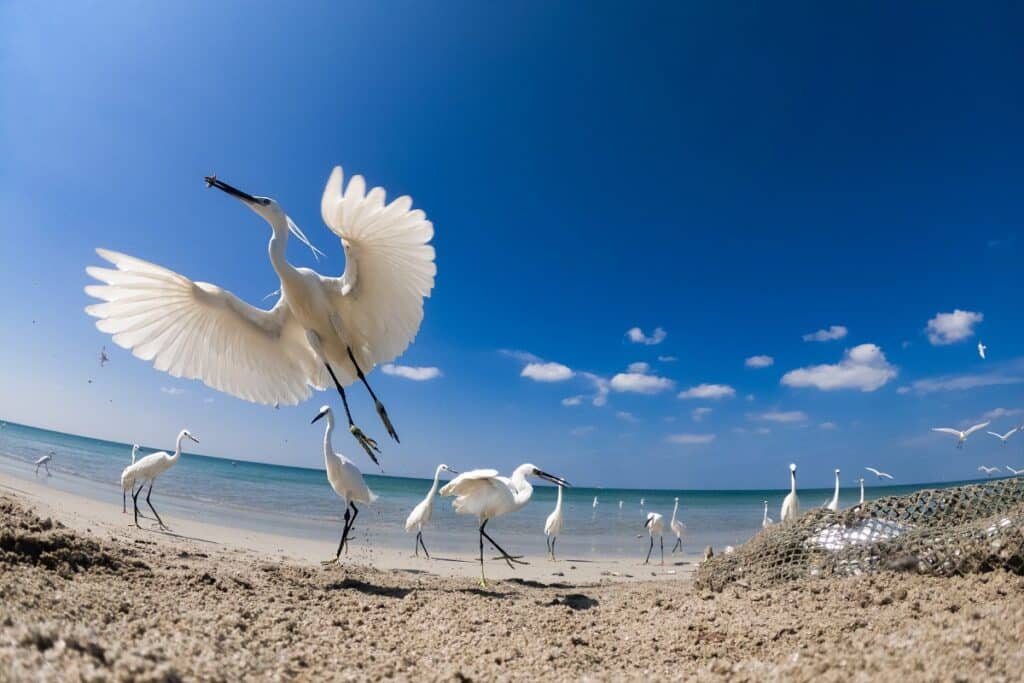
“To Theft of Fish” by Kaveesha Madhubhashana, Sri Lanka. Highly Commended, Mangroves & Wildlife.
“Egrets stealing fish from nets in Mannar Island, Sri Lanka.”
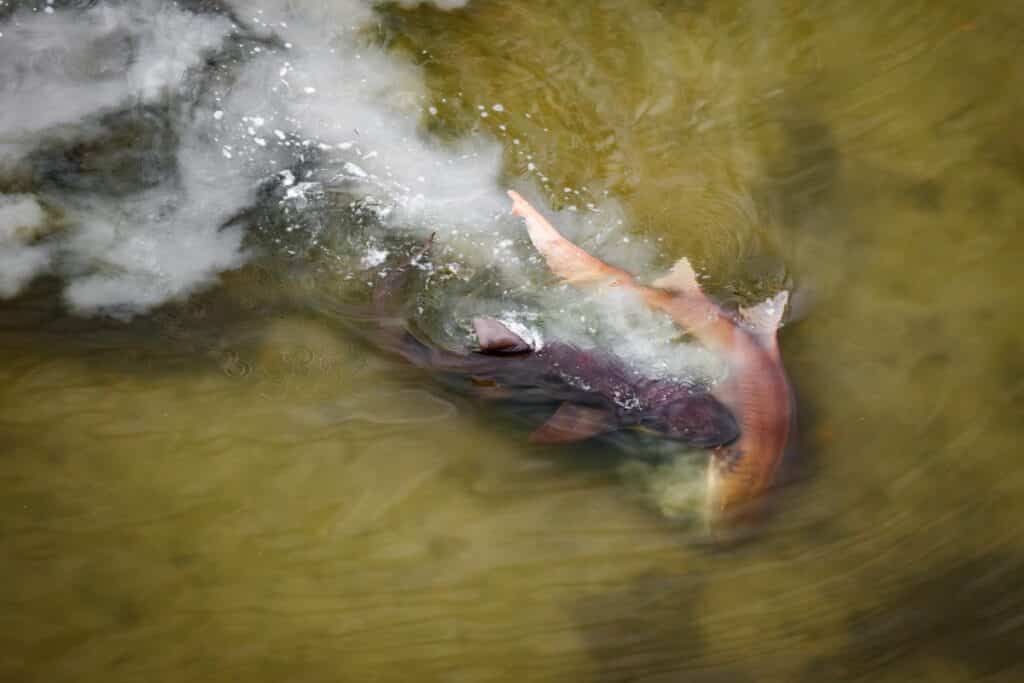
“Mating Nurse Sharks” by Mark Ian Cook, USA. Runner Up, Mangroves & Wildlife.
“Taken from a helicopter while conducting a scientific study of waterbirds, Mark captured the rarely observed mating behavior of two large Nurse Sharks in the shallow waters off the mangrove-lined (and aptly named) Shark Point in the Everglades National Park, Florida. The tangled prop roots and submerged vegetation offer a secure environment where adult sharks can engage in courtship without the disturbances and turbulence often found in open waters.”
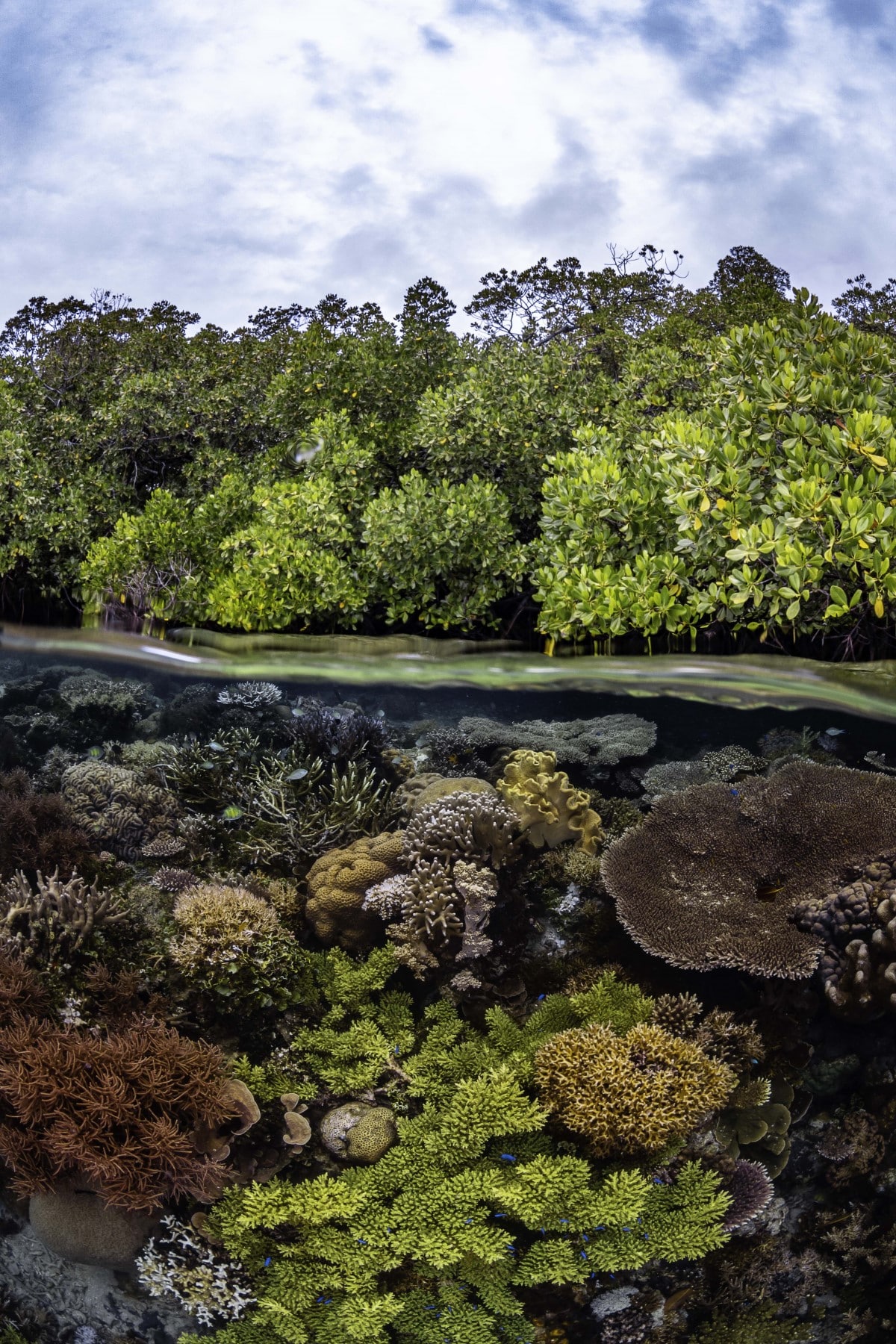
“Forest Meets Reef” by Brooke Pyke, Indonesia. Runner Up, Mangroves & Underwater.
“A lush and thriving mangrove forest grows atop a vibrant coral reef in Raja Ampat's Gam island – a split shot depicting two ecosystems that are vital for the health of our oceans. Connectivity between mangroves and coral reefs is a critical ecological relationship that plays a significant role in the health and sustainability of these ecosystems. The Indo-Pacific region is known for its extensive mangrove forests, with Indonesia alone comprising one-fifth of the global total. Mangroves often fringe the coral reef coastline, and the connectivity between mangroves and corals is of critical ecological importance. Mangroves provide many benefits to coral reefs, including protection from sedimentation, filtering nutrients from land and rivers, and nursery habitat for many species of juvenile fish.”











































































